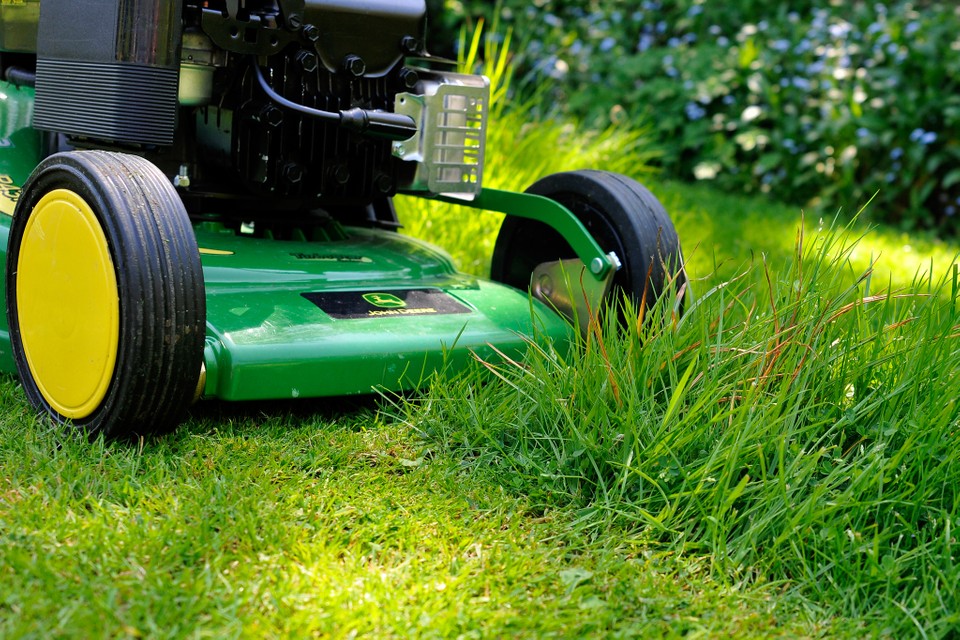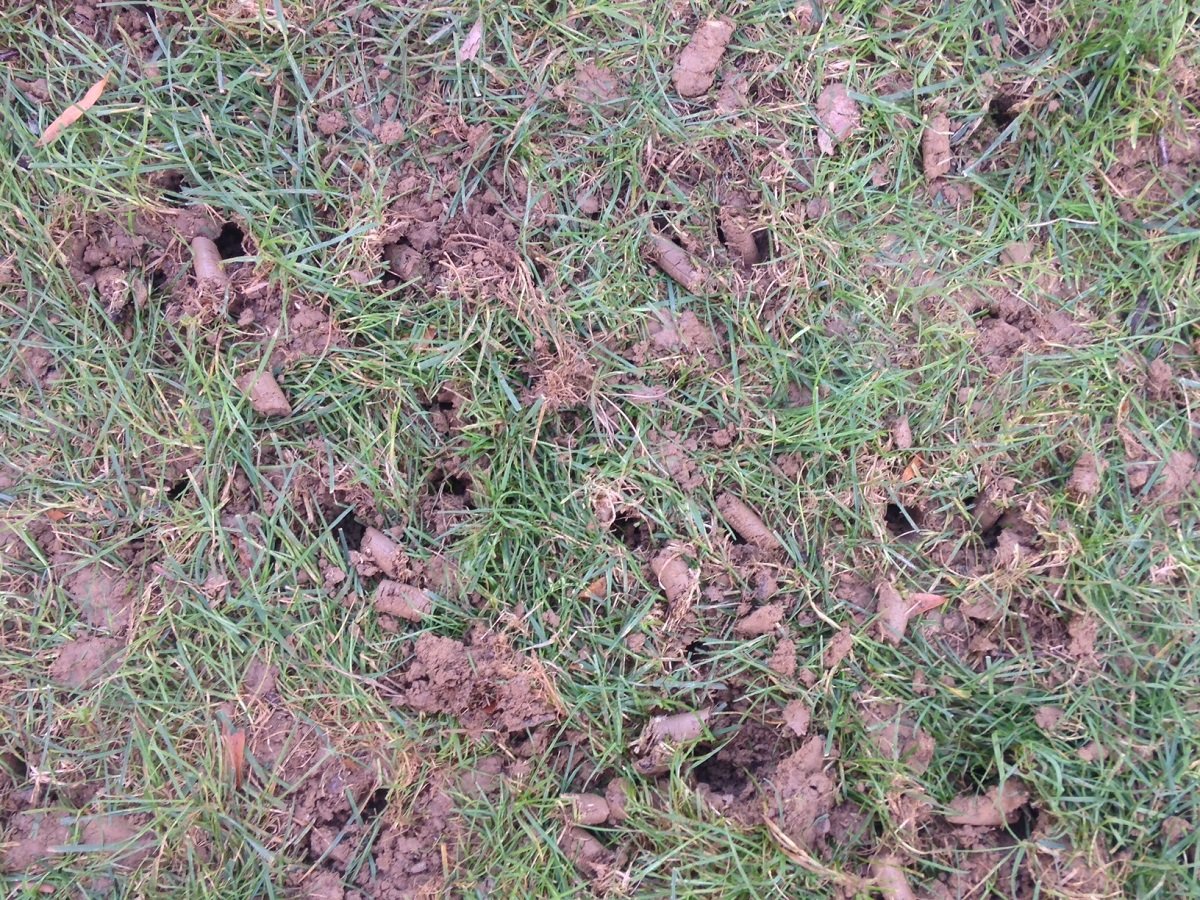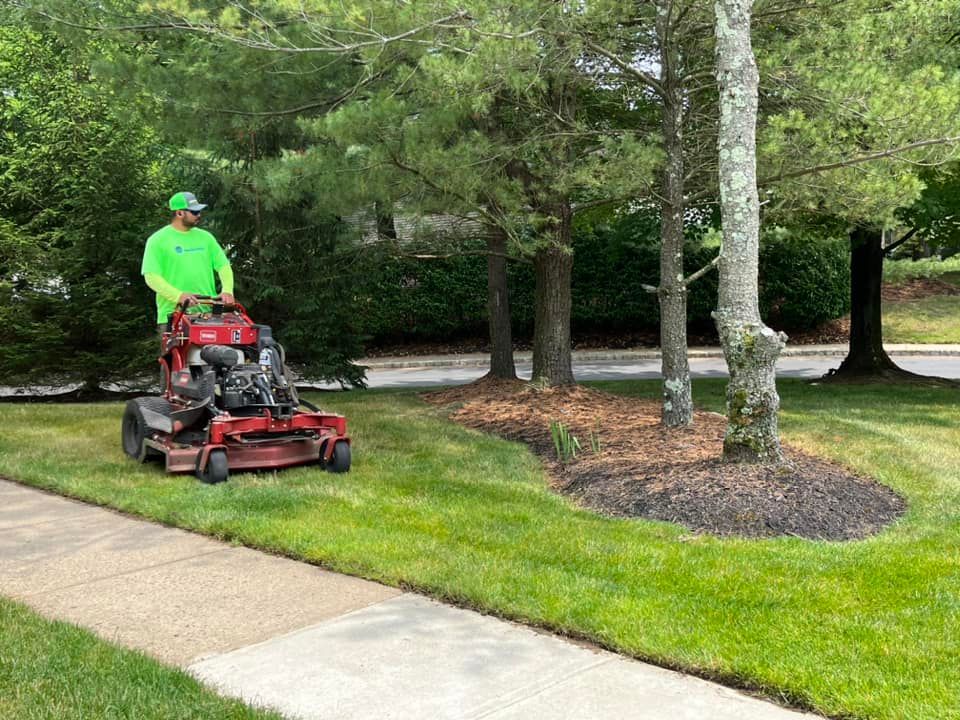Understanding Your Lawn’s Unique Needs
When it comes to lawn care, a one-size-fits-all approach simply doesn’t work. Every lawn is unique, with its own set of characteristics that require special attention. To provide the best care for your lawn, it’s essential to understand its specific needs. This includes considering the climate, soil type, and grass species that make up your lawn.
Climate plays a significant role in determining the type of care your lawn requires. Lawns in areas with high temperatures and low rainfall, for example, may need more frequent watering and specialized drought-resistant grass species. On the other hand, lawns in cooler, more temperate climates may require less watering and more attention to fertilization.
Soil type is another critical factor to consider when caring for your lawn. Different soil types have unique characteristics that affect drainage, nutrient availability, and overall lawn health. For instance, clay soils tend to be dense and prone to waterlogging, while sandy soils are often dry and nutrient-poor. Understanding your soil type will help you choose the right fertilizers and amendments to promote healthy growth.
Grass species is also a crucial consideration when it comes to lawn care. Different grass species have varying levels of tolerance to temperature, moisture, and sunlight. Some grass species, such as Kentucky bluegrass, are ideal for cooler climates, while others, like Bermudagrass, thrive in warmer temperatures. By understanding the specific needs of your grass species, you can tailor your care routine to promote optimal growth and health.
By taking the time to understand your lawn’s unique needs, you’ll be better equipped to provide the care it requires to thrive. This knowledge will inform your lawn care decisions, from choosing the right fertilizers and mowing heights to selecting the most effective pest control methods. With a little patience and attention to detail, you can create a lush, vibrant lawn that enhances your outdoor living space and provides years of enjoyment.
Essential Lawn Care Tools: What You Need to Get Started
When it comes to lawn care, having the right tools and equipment is essential for achieving a lush, well-manicured lawn. Whether you’re a seasoned lawn care professional or a DIY enthusiast, having the right tools can make all the difference in the world. In this section, we’ll explore the essential lawn care tools you need to get started.
First and foremost, a good lawn mower is the backbone of any lawn care routine. With so many options available on the market, it can be overwhelming to choose the right one. Consider the size of your lawn, the type of grass you have, and the level of maintenance you’re willing to commit to. For smaller lawns, a push mower or electric mower may be sufficient, while larger lawns may require a ride-on mower or zero-turn mower.
In addition to a lawn mower, a string trimmer is another essential tool for tidying up around trees, gardens, and other hard-to-reach areas. Look for a trimmer with a durable cutting head and a comfortable handle that makes it easy to maneuver. For thicker weeds and brush, consider a brush cutter or weed whacker.
Fertilizers and pesticides are also crucial components of any lawn care routine. Choose a fertilizer that’s specifically formulated for your grass type and climate, and follow the instructions carefully to avoid over-fertilizing. For pest control, consider using natural or organic methods whenever possible, such as introducing beneficial insects or using neem oil.
Other essential lawn care tools include a rake, trowel, and pruning shears. A rake is perfect for removing debris and even out mulch or soil, while a trowel is great for planting flowers or vegetables. Pruning shears are essential for trimming and shaping shrubs and trees.
When choosing lawn care tools, consider the quality and durability of the product. Look for tools with sturdy construction, comfortable handles, and sharp blades. While it may be tempting to opt for cheaper tools, investing in high-quality tools will pay off in the long run with better performance and longer lifespan.
By having the right tools and equipment, you’ll be well on your way to creating a beautiful, well-manicured lawn that you can be proud of. Remember to always follow safety precautions when using lawn care tools, and happy mowing!
Watering Your Lawn: Tips for Efficient Irrigation
Watering your lawn is an essential part of lawn care, but it can be a challenge to get it right. Overwatering can lead to shallow root growth, disease, and pest problems, while underwatering can cause stress and discoloration. In this section, we’ll explore the importance of proper drainage, avoiding overwatering, and using drought-resistant grass species to help you water your lawn effectively.
Proper drainage is critical to preventing waterlogged soil and root rot. Make sure your lawn has a slight slope to allow water to drain away from the surface. You can also install a French drain or a swale to direct water away from your lawn. Additionally, avoid watering your lawn during the hottest part of the day to prevent evaporation and reduce the risk of fungal diseases.
Avoiding overwatering is also crucial to maintaining a healthy lawn. Check the soil moisture by inserting a finger into the soil or using a soil probe. If the soil feels dry to the touch, it’s time to water. Water your lawn deeply but infrequently to encourage deep root growth. Aim to provide about 1-2 inches of water per week, either through rainfall or irrigation.
Using drought-resistant grass species is another effective way to reduce watering needs. These grasses have adapted to survive with minimal watering and can thrive in hot, dry conditions. Some popular drought-resistant grass species include buffalo grass, blue grama, and Bermuda grass. Keep in mind that even drought-resistant grasses will require some watering, especially during periods of extreme drought.
Smart irrigation controllers can also help you water your lawn more efficiently. These controllers use weather data and soil moisture sensors to adjust watering schedules and prevent overwatering. Consider investing in a smart irrigation controller to optimize your watering routine and reduce water waste.
Finally, consider using rainwater harvesting systems to collect and store rainwater for irrigation. These systems can help reduce your water bill and provide a sustainable source of water for your lawn. By implementing these tips and strategies, you can water your lawn effectively and maintain a healthy, thriving lawn.
Mowing and Edging: Techniques for a Manicured Look
Mowing and edging are essential tasks in lawn care that can make a significant difference in the appearance of your lawn. A well-manicured lawn can boost your home’s curb appeal and create a welcoming outdoor space. In this section, we’ll explore the techniques for mowing and edging your lawn to achieve a neat and tidy appearance.
Maintaining a consistent mowing height is crucial for a healthy and visually appealing lawn. The ideal mowing height varies depending on the type of grass you have, but a general rule of thumb is to keep it between 2.5 and 3 inches. This allows the grass to grow deep enough to shade out weeds and retain moisture, while also preventing it from becoming too tall and unruly.
Using a sharp blade is also essential for a clean cut and to prevent tearing the grass. A dull blade can leave the grass with a ragged appearance and create an entry point for diseases and pests. Consider sharpening your mower blade regularly or replacing it every few months to ensure a clean cut.
Edging is another critical task in lawn care that can help create a defined border between your lawn and surrounding features such as gardens, sidewalks, and driveways. Use a string trimmer or edger to create a clean edge and prevent overgrowth. Consider using a lawn edger with a rotating blade to create a precise edge and prevent damage to surrounding surfaces.
When mowing and edging, it’s essential to follow a pattern to ensure an even cut and prevent missing spots. Start by mowing in a straight line, then turn and mow in a perpendicular direction to create a pattern. Use a lawn mower with a swivel wheel to make it easier to maneuver and change direction.
Finally, consider using a lawn mower with a mulching feature to leave the clippings on the lawn and act as a natural fertilizer. This can help reduce waste and create a healthier lawn. By following these techniques and tips, you can achieve a well-manicured lawn that enhances your outdoor space and boosts your home’s curb appeal.
Fertilizing and Pest Control: Keeping Your Lawn Healthy
Fertilizing and pest control are two essential components of lawn care that can help keep your lawn healthy and thriving. Fertilizers provide your lawn with the necessary nutrients to grow and maintain its color and texture, while pest control methods help prevent damage from pests and diseases. In this section, we’ll explore the importance of fertilizing and pest control in lawn care and provide tips on how to apply them safely and effectively.
There are several types of fertilizers available, including organic and synthetic options. Organic fertilizers, such as compost and manure, are made from natural materials and release nutrients slowly over time. Synthetic fertilizers, on the other hand, are made from chemical compounds and provide a quick burst of nutrients. When choosing a fertilizer, consider the type of grass you have and the climate you live in. For example, if you have a cool-season grass, you may want to use a fertilizer that is high in phosphorus to promote root growth.
Pest control is also an important aspect of lawn care. Common pests that can damage your lawn include white grubs, chinch bugs, and billbugs. To prevent pest damage, use a combination of cultural, mechanical, and chemical controls. Cultural controls include practices such as proper mowing, watering, and fertilizing, while mechanical controls include techniques such as hand-picking and trapping. Chemical controls, such as insecticides and fungicides, should be used as a last resort and only when necessary.
When applying fertilizers and pest control methods, it’s essential to follow the instructions carefully and take necessary safety precautions. Always wear protective clothing, including gloves and eyewear, and avoid applying fertilizers and pesticides during windy or rainy weather. It’s also important to keep children and pets away from treated areas until the products have dried or dissipated.
In addition to fertilizers and pest control methods, there are several other ways to keep your lawn healthy and thriving. Regular mowing, watering, and aeration can help promote healthy growth and prevent pest and disease problems. By following these tips and using the right fertilizers and pest control methods, you can keep your lawn healthy and looking its best.
Common Lawn Problems: Troubleshooting and Solutions
Despite your best efforts, lawn problems can still arise. Weeds, bare spots, and fungal diseases are just a few common issues that can affect the health and appearance of your lawn. In this section, we’ll identify some common lawn problems and offer troubleshooting tips and solutions to help you overcome them.
Weeds are one of the most common lawn problems. They can be unsightly and compete with your grass for water and nutrients. To prevent weeds, use a pre-emergent herbicide in early spring to prevent crabgrass and other annual weeds from germinating. For perennial weeds like dandelions and clover, use a post-emergent herbicide or manually remove them by digging or pulling.
Bare spots are another common issue that can affect the appearance of your lawn. They can be caused by a variety of factors, including foot traffic, pet urine, and disease. To repair bare spots, rake the area to loosen the soil and remove any debris. Then, apply a lawn repair mixture or grass seed to the area and keep it consistently watered until the new grass is established.
Fungal diseases like powdery mildew and rust can also affect the health of your lawn. These diseases can be caused by a variety of factors, including excessive moisture, poor air circulation, and high temperatures. To prevent fungal diseases, maintain good lawn care practices like proper mowing, watering, and fertilizing. If you do notice fungal diseases, use a fungicide to treat the affected area and take steps to improve air circulation and reduce moisture.
Other common lawn problems include pests like white grubs and chinch bugs, and environmental stressors like drought and extreme temperatures. To prevent pest damage, use a combination of cultural, mechanical, and chemical controls. To mitigate environmental stressors, maintain good lawn care practices and take steps to improve soil health and structure.
By being aware of these common lawn problems and taking steps to prevent and address them, you can keep your lawn healthy and looking its best. Remember to always follow best practices for lawn care and take a proactive approach to preventing problems before they arise.
Lawn Aeration and Dethatching: Improving Soil Health
Lawn aeration and dethatching are two essential tasks that can help improve the health and appearance of your lawn. Aeration involves removing small plugs of soil and grass to improve airflow, reduce soil compaction, and promote healthy drainage. Dethatching, on the other hand, involves removing dead grass and debris from the lawn to improve soil health and reduce the risk of disease.
There are several benefits to aerating and dethatching your lawn. Aeration can help improve soil drainage, reduce soil compaction, and promote healthy root growth. Dethatching can help remove dead grass and debris, improve soil health, and reduce the risk of disease. By performing these tasks regularly, you can help keep your lawn healthy and looking its best.
To aerate your lawn, you can use a manual or powered aerator. Manual aerators are less expensive and can be used for small lawns, while powered aerators are more efficient and can be used for larger lawns. When aerating, make sure to remove the plugs of soil and grass to a depth of about 2-3 inches. This will help improve airflow and reduce soil compaction.
To dethatch your lawn, you can use a dethatching rake or a power rake. Dethatching rakes are less expensive and can be used for small lawns, while power rakes are more efficient and can be used for larger lawns. When dethatching, make sure to remove as much dead grass and debris as possible. This will help improve soil health and reduce the risk of disease.
It’s also important to note that aeration and dethatching should be done at the right time of year. For cool-season grasses, aeration and dethatching should be done in the fall or early spring. For warm-season grasses, aeration and dethatching should be done in the late spring or early summer.
By incorporating aeration and dethatching into your lawn care routine, you can help keep your lawn healthy and looking its best. Remember to always follow best practices for lawn care and take a proactive approach to preventing problems before they arise.
Seasonal Lawn Care: Adjusting Your Routine for Optimal Results
As the seasons change, your lawn care routine should adjust to ensure optimal results. In this section, we’ll provide guidance on how to adjust your lawn care routine for different seasons, including winterizing your lawn, preparing for spring growth, and maintaining your lawn during hot summer months.
Winterizing your lawn is essential to prepare it for the cold weather ahead. This includes applying a winterizer fertilizer to promote root growth, aerating the lawn to improve drainage, and mowing the lawn at a higher height to protect it from snow and ice. Additionally, consider applying a layer of mulch or straw to protect the lawn from extreme temperatures and prevent soil erosion.
As the weather warms up in the spring, it’s essential to prepare your lawn for new growth. This includes applying a spring fertilizer to promote green growth, mowing the lawn at a lower height to encourage dense growth, and controlling weeds and pests. Additionally, consider aerating the lawn again to improve drainage and reduce soil compaction.
During the hot summer months, it’s essential to maintain your lawn’s health and appearance. This includes watering the lawn deeply but infrequently to encourage deep root growth, mowing the lawn at a higher height to protect it from heat stress, and controlling weeds and pests. Additionally, consider applying a summer fertilizer to promote healthy growth and prevent disease.
In the fall, it’s essential to prepare your lawn for the upcoming winter. This includes applying a fall fertilizer to promote root growth, aerating the lawn to improve drainage, and mowing the lawn at a higher height to protect it from snow and ice. Additionally, consider applying a layer of mulch or straw to protect the lawn from extreme temperatures and prevent soil erosion.
By adjusting your lawn care routine for different seasons, you can ensure optimal results and maintain a healthy, beautiful lawn. Remember to always follow best practices for lawn care and take a proactive approach to preventing problems before they arise.







